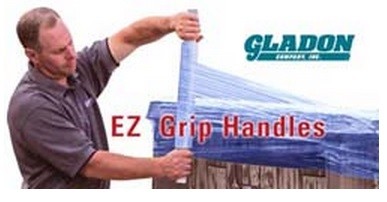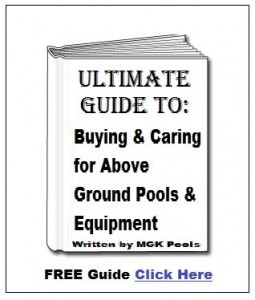Winterize Above-Ground Pool
We close/winterize a lot of above-ground pools. We are going to give you detailed instructions below, but if you don’t have the time or resources, give us a call, and we will be happy to do it for you (978) 710-8667. Please text if having trouble reaching us.
How to Winterize Your Above-Ground Pool
The only reason we winterize above ground pools for the offseason is to prevent damage to the pool, pool equipment (Filter & Pump), and to keep it clean until the spring. You will find these directions easier if you have a helper.
Overview: Drain water from swimming pool, filter and pump, put a plug in the return hole (where the water returns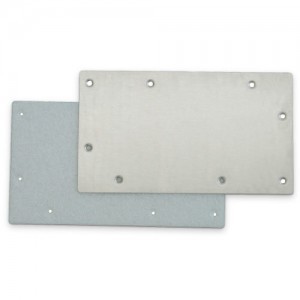
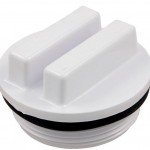
to the pool), install skimmer faceplate cover, remove hoses, add algaecide, tie-off air pillow in the center and install a cover. Keep water from building up on the winter-cover.
Preparing Your Pool For The Winter
Pool Closing Supplies & Tools Needed
Tools
I typically use a 5/16 socket on a cordless drill to quickly remove hose clamps, but a medium flathead screwdriver will work fine. A large size pair of channel-locks maybe needed to remove filter plug, or return jet. Pliers or previous tools mentioned should be adequate for removing pump plug (s).
NOTE* Always be careful around the pool liner with tools. Avoid resting anything heavy or sharp on the top rail, or on the deck next to the pool.
Supplies
- Pool cover
- Air pillow or two
- Twine
- Algaecide
- Cable & Crank for cover (usually comes included with new covers)
- Tarp and Bungee cord (for filter and pump) optional
Check out this page if you need winterizing chemicals or supplies.
Clean The Pool
A lot of pool winterizing instructions will tell you to get your water balanced first. I will assume you have been doing this all year and don’t require any additional preparation. I won’t even tell you to get the leaves out, but it will be easier now than after they break down over the winter into small particles that now have to get filtered out.
Grab a skimmer or a leaf net and get out what you can.
Lower The Pool Water (Overly Detailed Instructions)
Before I give you a couple of ways to lower the water without a pump, let me just say that this is an excellent time to replace water. Water replacement should be part of your regular maintenance. By partially draining the pool in the fall and refilling it when you open the pool, you accomplish this quite nicely.
Never remove all the water or your above-ground swimming pool liner will be ruined.
Without getting into a heady conversation, let’s just say there are usually unhealthy things called Total Dissolved Solids (TDS) that can build up, the only way they get removed, is with water replacement.
For any size above-ground pool I recommend lowering the water 2 inches below the swimming pool return.
You can siphon, pump or drain your pool for the winter
Here is one way to lower the water; draining-technique: Remove the filter hose from the pool wall, and hook up the hose you use for vacuuming, this will allow most of the water to drain well away from the pool. Do not let water to build up near the swimming pool wall.
You never want water to flow or build up by your swimming pool wall, as it will undermine the sand under it, leading to erosion issues.
Another simple way to lower the water slowly over time is to siphon it out with a garden hose, or your pool vacuum hose. Place either one a foot under the pool surface, and suck hard on the other end for 4-5 seconds, or 2 seconds on a short tube, then throw the end down. As long as the draining-end is lower than the end that is in the pool, it will siphon.
Again, never completely drain an above ground pool, always leave at least a foot of water to prevent damaging your pool liner. For winterizing, 1-2 inches below the pool return will suffice.
While the pool is draining, pull the filter plug and open the vent screw at the top of the pool filter. Remove any winter plugs in your pool-pump and chlorinator.
Winterizing Above Ground Filters
Sand filters are the easiest to winterize, you just pull the drain plug at the bottom and place the multi-way position valve to winterize, or just in-between two positions. If there is a winter plug in the multi-way valve, remove it too.
Earth filters and Cartridge filters should be disassembled and cleaned. Older pool filters tend to have a lot of hardware, and newer equipment tends to have a band with one nut, or one big ring-nut that makes disassembly quick and less involved.
When reassembling pool-filters, be sure to lube all o-rings. Look for rips in filter media. Both Cartridge and D.E filters are usually cleaned and stored indoors for the off-season.
Winterizing Chemicals For Above-Ground Pools
There are all kinds of kits and gadgets. We have a great chemical kit for short money we use. It has a stabilizer, non-chlorine shock, and algaecide. If you close a clean pool and don’t dump in debris when removing the pool-cover, it should open very clean.
Whatever you do, don’t throw in powdered anything, that will just sit on the bottom of the pool liner. You can burn your pool liner with chlorine. Mix all chemicals individually in a bucket of water.
PRO TIP* Allways add winterizing chemicals to water, never add water to chemicals.
Installing The Air Pillow & Winter Cover On Your Above Ground Pool
Air Pillow
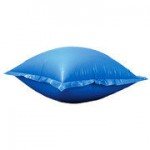
Some people use empty plastic drums, but most blow up an air pillow. The air pillow is to prevent ice from freezing solid across the top and thus, expanding and pushing out on the pool-walls. An ice dam is a critical item when winterizing an above-ground swimming pool.
Do not fill air pillows up to capacity like a balloon, blow it up about 1/2 to 3/4 full. This way the water pressure won’t pop it. Use the twine to tie the air pillow off in the center of the pool.
Above-Ground Pool Winter Cover
Use a non-porous winter cover so that no dirt can pass through it. If you want your above-ground pool as clean as it was when you winterized it, you will use a solid cover. Also, buy one with at least a 12-year warranty. Anything else is cheapo garbage.
Putting the winter cover on is where your helper will come in handy, especially if it is a windy day. My helper and I try to catch the wind and fly the cover over the top of the pool, vs. dragging it over the air pillow.
Once the pool-cover is in place, secure it by threading the securing cable in one eyelet, then out the next, and repeat until you go all the way around and can fasten the two ends. Then install the crank onto both ends, and tighten it up until the cable is very taught.
It is easier to keep a taught winter-cover clean One way to do this is to dangle gallon jugs half filled with water from the edge of the pool cover. Just tie the jugs into the eyelets of the winter pool cover. Dangling weights is especially important in windy areas.
Be sure and use a cover pump, or to siphon off the water as it begins to accumulate.
Conclusion
The most important thing is to get out any standing water in your pool equipment and to cover the pool to keep dirt out. If you have a heater or don’t feel like you got all the water out, use a pool antifreeze to dilute any standing water that may be left. You can use a shop vacuum in reverse to blow air through the system too.
If you are not able to bring some of your equipment indoors for the winter, it would be a good idea to wrap it in a small tarp and put a bungee cord around the base.
